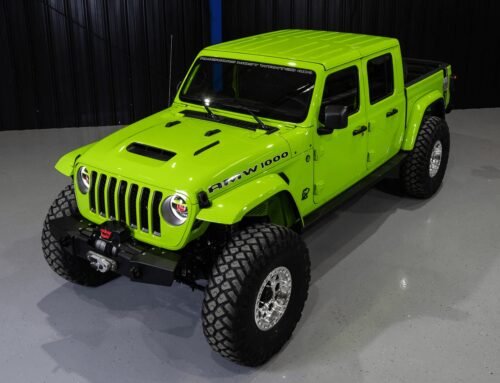Can the upcoming Bolt EUV deliver a knockout blow to the impressive Kona EV?
Chevrolet has just revealed the all-new 2022 Bolt EUV which is part of the company’s bold move to release 30 new EVs globally by 2025. The Bolt EUV will make its debut sometime next year before entering production next summer and will be the first Chevrolet to feature GM’s Super Cruise semi-autonomous driving technology. The new Bolt has raised eyebrows, but as always, the competition will be stiff for this little EUV, as Korean giant Hyundai readies its own electric onslaught. When the Chevrolet Bolt EUV hits the road, it will have to face off against the Hyundai Kona Electric. By the time the Bolt hits the road, the Kona EV will have been around for a while, but this gives Hyundai all the time to make improvements and polish a product that is already pretty impressive. But the question remains, which is the better car?
 CarBuzz
CarBuzz
Exterior Design: The Bold And The Disagreeable
It doesn’t matter whether we’re comparing sports coupes or small electric crossovers; styling remains an important part of any new car. So which one of these little city zoomers looks best?
The Bolt EUV clearly shares its design language with the regular Bolt, but despite appearances, the two cars do not share a single body panel. The Bolt EUV features a muscular front end design with a charming center crease line that runs from the front fascia through the hood, and we do like those slim headlights and angular fog light enclosures. The standard roof rails and pronounced wheel arches give it some off-road attitude, even if it’s just lip service.
The Kona Electric, on the other hand, has a face that some might find a bit harder to love. The front fascia features a unique grid-pattern design and a pronounced crease that connects the headlights to the Hyundai logo. LED headlights are available higher up in the range, and all trim levels come standard with 17-inch wheels. At the rear things don’t get much better, but at least the side profile is better to look at.
If style is a big factor to you, we’d suggest the Chevrolet.
 Chevrolet
Chevrolet
 Chevrolet
Chevrolet
 Hyundai
Hyundai
 Hyundai
Hyundai
Interior Design: New Kid Cool
On the inside, both the Bolt and Kona offer a clean and ergonomic interior design, but there is a clear winner here. The interior of the Kona feels outdated compared to the new Bolt EUV. The build quality is good enough, but the overall design feels years behind the Bolt. At least the 10.25-inch infotainment display in the top-tier Ultimate trim future-proofs the Kona somewhat, and luxury features such as ventilated seats are nice to have in this class.
Comparatively, the interior of the Bolt feels like a breath of fresh air. It gets a brand new instrument panel and a 10.2-inch infotainment screen integrated into the dashboard, making the cabin look and feel far more futuristic. The design also feels more in touch with what young drivers will expect from a cutting-edge electric vehicle, and small styling elements such as a flat-bottom steering wheel with integrated “Regen on Demand” paddles add a sporty touch the Kona lacks. But the Kona pulls back in the practicality stakes, with 19.2 cubic feet of cargo space to the Bolt EUV’s 16.3, although with the rear seats folded, the positions swap, as the Kona boasts only 45.8 cubes to the Bolt’s 56.9.
 Chevrolet
Chevrolet
 Chevrolet
Chevrolet
 Hyundai
Hyundai
 Hyundai
Hyundai
Features: Self Driving For The Win
Standard tech features are becoming increasingly important, and the Bolt EUV promises to bring with it a slew of advanced new features that should make the Kona feel dated. But the Korean car still has a few tricks up its sleeve. Hyundai is known for packing a ton of standard features in its cars and the Kona EV offers a lot with automatic climate control, keyless entry with push-button start, wireless phone charging, ventilated seats, and even a head-up display on some trims. All trim levels also score standard blind-spot monitoring, rear cross-traffic assistance, forward collision avoidance, lane keep assist, and driver attention warning.
What we know so far about the Bolt EV is that it will pack a 10.2-inch infotainment screen, optional heated and ventilated front seats, a panoramic sunroof, and matching safety systems to those of the Kona. But the Bolt EUV’s biggest party trick will be its semi-autonomous driving capability, branded as “Super Cruise”, giving it hands-free capabilities on more than 200,000 miles of road across the US and Canada. Hyundai offers a lot, but we’ll give the Bolt EUV a chance to prove itself when it comes out this summer. On paper, it’s the winner.
 Hyundai
Hyundai
 Hyundai
Hyundai
 Chevrolet
Chevrolet
 Chevrolet
Chevrolet
Performance: Mild Not Wild
The new Bolt inherits its powertrain from the old one, featuring a permanent magnetic drive motor powered by a 65-kWh lithium-ion battery. Power is rated at 200 horsepower and 266 lb-ft of torque. Due to its increased height, length, and weight, the Bolt EUV will have a slightly shorter range than its smaller sibling at 250 miles. However, new architecture means improved charging, and the Bolt EUV will be able to recuperate 95 miles of range in 30 minutes off a DC fast charger.
The Kona EV boasts slightly better figures: powered by a permanent-magnet synchronous motor and a 64 kWh-lithium-ion polymer battery, it produces 201 hp and 291 lb-ft. Like the Bolt, power is directed to the front axle. This setup provides a range of 258 miles, 8 more than the Bolt EUV., and DC fast-charging replenishes 80% charge in 54 minutes.
In a straight dash to 60 mph, both are equally matched, and a mid-6-second effort is in the cards for both. It’s as close as you can get here, but for the 8-mile extra range bonus, the Kona Electric barely takes it.
 Hyundai
Hyundai
 Hyundai
Hyundai
 Chevrolet
Chevrolet
 Chevrolet
Chevrolet
Verdict: The Electric Revolution Is Here
Each of these little electric crossovers provides several enticing reasons to buy, and it really comes down to the wire as to which is the better buy. It’s easy to come to the conclusion that the Bolt EUV is the better-looking car, which is a major win for Chevrolet, and the Bolt delivers another solid blow to the Kona EV when it comes to interior styling. In terms of features, the jury is still out as the final specification on the Bolt EUV hasn’t been confirmed, but as it stands, the Chevy is looking like it’ll have the best safety systems and loads of convenience features.
Performance-wise, the Bolt EUV hasn’t moved the game on substantially, placing both on an even keel. However, Chevrolet has committed to making the EV affordable, and the new Bolt EUV will set you back $33,995 including destination. The Kona, by comparison, is more expensive at $37,190 for the base SEL model. Considering they are so closely matched, the Bolt EUV at a cheaper price with more tech seems a shoo-in for success. In this case, newer is better.
 Chevrolet
Chevrolet
 Chevrolet
Chevrolet
 Chevrolet
Chevrolet
 Hyundai
Hyundai
 Hyundai
Hyundai
 Hyundai
Hyundai





